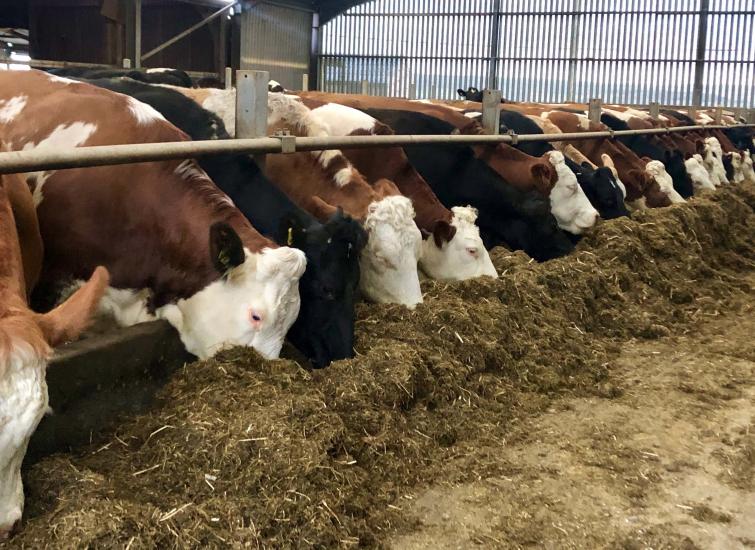In just a month, with the Advanced Robot team visits have improved from 2.9 to 3.2
A focus on silage to improve milk from forage
Calum Smith focuses on silage making to utilise and maximise forage potential at Drumore Farm in Ayrshire

Ruminant Specialist, Calum Smith has been working with Grant Limond at Drumore Farm for the past two years. Working together on all aspects of the farm business, they took a special focus towards silage making that’s had a widespread effect on the rest of the business.
Mr Limond is based in Kirkmichael, Ayrshire and has 270 milking cows (200 Fresians and 70 Flechvies) in his dairy herd. They operate a spring and autumn block calving system. The cows are fed a grass silage diet, with early spring grazing to maximise cutting potential and to ensure maximum energy levels for the cows. Calum was brought on board in 2017 to focus on silage making with the aim of increasing milk from forage.
Calum explains, “Grant and I had the same goal on the farm - to maximise profit while keeping cow health at an optimal level. We decided the best way to do this would be to look at silage making and focus on how we could get more from what we were already doing. We challenged the old concepts and really pushed forwards.”
Mr Limond continues, “The dairy industry has long been in a period of uncertainty and it seems this will continue. So, for us maximising the potential of forage already on the farm was an obvious route to take. We were keen to work with Calum at Advanced Nutrition, it’s rare that nutritionists value forage as highly as we do - it’s 60 – 80% of the diet. Since working together, we’ve now gone from a two cut to a multi-cut silage system, made possible with the contractor being aware of the change and coming in when we need him.”
Grant has been able to produce 1.5 tonnes per acre more of silage in the clamp. The team base the number of cuts on the season on careful monitoring, looking closely at the sward, as well as being adaptable to the weather. On average, they will leave six weeks between cuts, but are not fixed on this.
“We make educated decisions,” Grant says, “looking at fresh grass samples and grass leaf stages, we back calculate how much forage we need for the cattle for the start of the winter. We’ve currently taken sixteen days off our first cut date to allow us the window to be flexible with weather. Our main aim is getting the right dry matter and more protein and energy into the pit.”
Calum comments, “The results have really made a difference to the farm. We are getting 5-6kgs more forage into the cows and over the two-year period we’ve seen the cows go from 6,300 litres a lactation to 7,000 litres. We are still only using 1 tonne of feed/ cow and Grant is sending away 20,000 litres more per month. Three years have seen him increase production by 500,000 litres which is a 33% increase.”
Not only that, milk quality and overall animal health has improved, with higher solids to improve the milk contract. The figures can be seen in the table below.

The results have been in part due to the increase in cuts across the season, but also through the ability to maintain the quality of the silage throughout the year. Grant puts this down to the use of a silage additive – Bon Silage Fit.
He comments, “It adds more expense, but the results speak for themselves, we wouldn’t be without it. We’ve had no waste on the pit or the trough – not even a grape full!”
The additive helps to prevent spoilage and works by shifting the fermentation acid patterns to produce more acetic acid and propylene glycol which increases aerobic stability to stop the clamp face from heating. Propylene glycol is also beneficial to cows in early lactation to reduce the effects of negative energy balance, due to its ability to reduce body fat mobilisation.
Pit management is also worth paying particular attention too. Grant comments, “I always roll twice as compacting the pit is key. Then get the sheet on as soon as you can followed by astro mats and tyres so there is no space on top at all.”
Calum continues, “Planning and adaptability with silage making is key, set yourself goals and have a plan to achieve them. Our next target for Drumore farm is to get to a target of 5,000 litres from forage. We’ll continue to manage the soil’s pH and Phosphate levels to give the grass the best chance. Testing the grass before cutting, also helps a great deal as it gives an indication of nitrate levels in the sward and then it’s just down to the weather!”
〈 BACK




